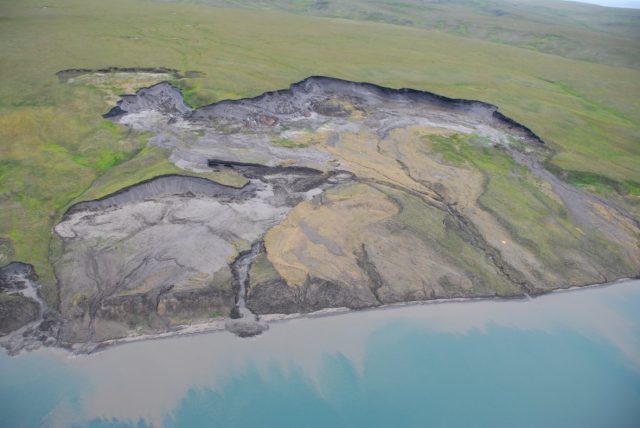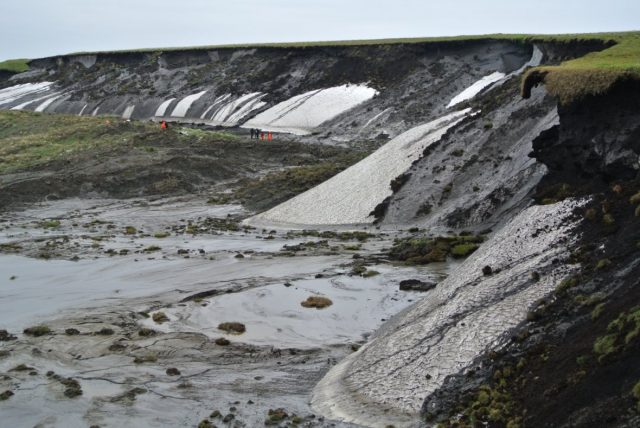6 January 2017
Collapsing Arctic coastlines
Posted by Dave Petley
Collapsing Arctic coastlines
In a commentary just published in Nature Climate Change, Michael Fritz from the Helmholtz Centre for Polar and Marine Research in Potsdam, and colleagues, have highlighted the potential physical and socioeconomic impacts of the collapse of coastlines in the Arctic. The article has also been covered in a piece published today in the International Business Times, which is accompanied by some startling images of the coastal landslides that are a primary mechanism for this loss of land:

The eroding coastlines of the Arctic – image by Michael Krautblatter via IBT
.
The article highlights that the materials that form these Arctic coastlines consist primarily of thick, organic-rich permafrost (frozen soils). The rate of erosion of these coastlines has increased dramatically as global warming drives an increasing impact in high latitude areas. The effects are a triple whammy on arctic coastlines, as noted by Fritz et al. (2017):
Fluxes from coastal erosion are expected to drastically increase due to the combined effect of declining summer sea-ice cover on the Arctic Ocean, longer and warmer thawing seasons, and the rising sea level allowing waves to hit the coast higher and longer during the ice-free season.
The upshot is rates of erosion that can reach 25 metres per year, as shown in the image below, and huge increases in the rate of organic release.

A landslide on Herschel Island, illustrating the rate of loss of Arctic coastlines. Image by Boris Radosavljevic via IBT
.
Fritz et al. (2017) note that the impact of such large releases of carbon to the local and global environment are poorly understood, and urge an increased research effort to understand these processes. They note that these landslides that are causing such rapid degradation of Arctic coastlines are likely to have impacts on Arctic marine biodiversity, food security of high latitude people and cultural heritage. These impacts are being seen across the Arctic – 34% of the Earth’s coasts consist of permafrost soils – so the need for increased understanding is clear.
Reference
Fritz, M., Vonk, J.E. and Lantuit, H. 2017. Collapsing Arctic Coastlines. Nature Climate Change, 7, 6–7, doi:10.1038/nclimate3188
Other posts about the impacts of rapid climate change in the high latitudes
- The catastrophic loss of Arctic Sea Ice and its implications for landslides
- The Icy Bay landslide in Alaska: a nice video describing the link with glacial melting
- Slumps caused by thawing ground on Mars and Earth


 Dave Petley is the Vice-Chancellor of the University of Hull in the United Kingdom. His blog provides commentary and analysis of landslide events occurring worldwide, including the landslides themselves, latest research, and conferences and meetings.
Dave Petley is the Vice-Chancellor of the University of Hull in the United Kingdom. His blog provides commentary and analysis of landslide events occurring worldwide, including the landslides themselves, latest research, and conferences and meetings.
What proportion of these soils is quick clay, which as salt levels diminish as rain water leeches it away, can liquefy with the slightest disturbance?
I saw this in a reduced scale when working in Alaska in the 80s, but it was mainly reduced in the sense that slopes were few, so the instability was induced by the lightest of ill-advised traffic, and it was regulated aggressively. I was told that one scar on a rather flat slope dated from the Korean war era. The underlying mechanism was the same.